Stimulation of Myc transactivation by the TATA binding protein in promoter-reporter assays
- PMID: 15876353
- PMCID: PMC1145180
- DOI: 10.1186/1471-2091-6-7
Stimulation of Myc transactivation by the TATA binding protein in promoter-reporter assays
Abstract
Background: The c-Myc oncogenic transcription factor heterodimerizes with Max, binds specific DNA sites and regulates transcription. The role of Myc in transcriptional activation involves its binding to TRRAP and histone acetylases; however, Myc's ability to activate transcription in transient transfection assays is remarkably weak (2 to 5 fold) when compared to other transcription factors. Since a deletion Myc mutant D106-143 and a substitution mutant W135E that weakly binds TRRAP are still fully active in transient transfection reporter assays and the TATA binding protein (TBP) has been reported to directly bind Myc, we sought to determine the effect of TBP on Myc transactivation.
Results: We report here a potent stimulation of Myc transactivation by TBP, allowing up to 35-fold transactivation of reporter constructs. Although promoters with an initiator (InR) element briskly responded to Myc transactivation, the presence of an InR significantly diminished the response to increasing amounts of TBP. We surmise from these findings that promoters containing both TATA and InR elements may control Myc responsive genes that require brisk increased expression within a narrow window of Myc levels, independent of TBP. In contrast, promoters driven by the TATA element only, may also respond to modulation of TBP activity or levels.
Conclusion: Our observations not only demonstrate that TBP is limiting for Myc transactivation in transient transfection experiments, but they also suggest that the inclusion of TBP in Myc transactivation assays may further improve the characterization of c-Myc target genes.
Figures
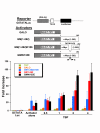


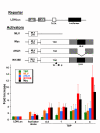
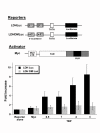
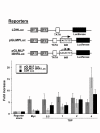
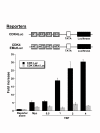
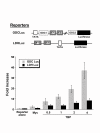

References
Publication types
MeSH terms
Substances
Grants and funding
LinkOut - more resources
Full Text Sources

